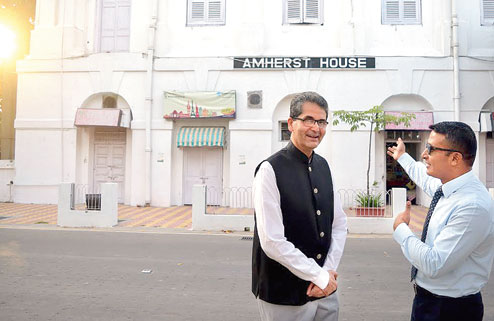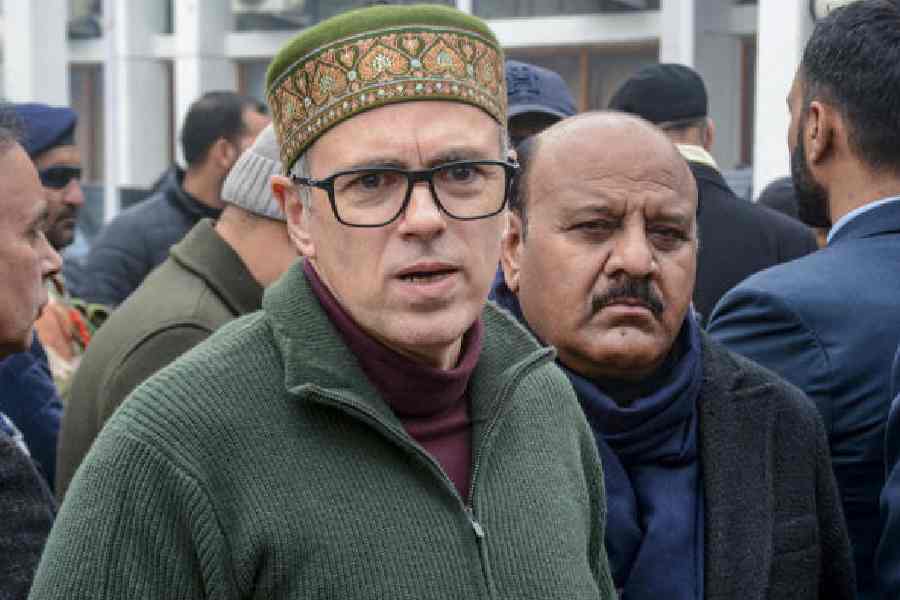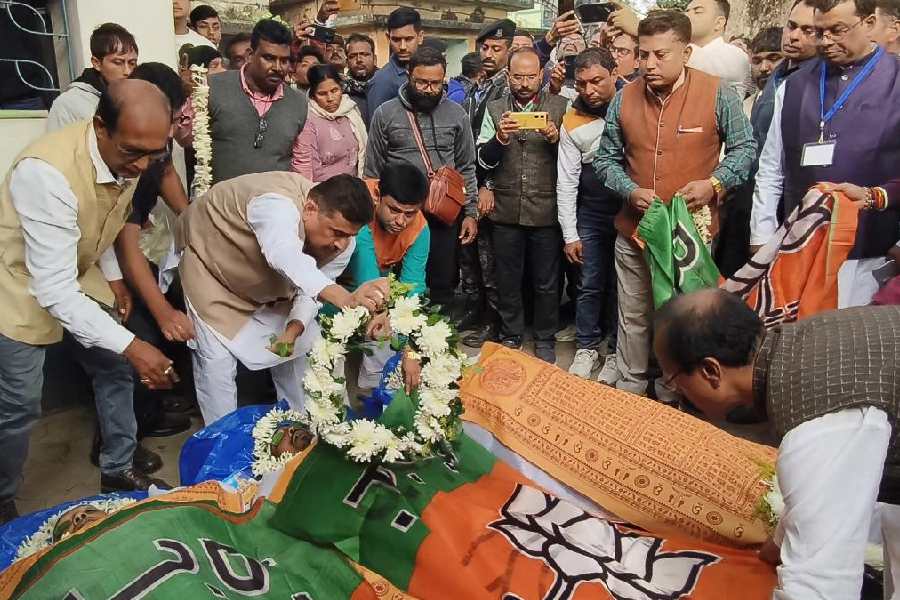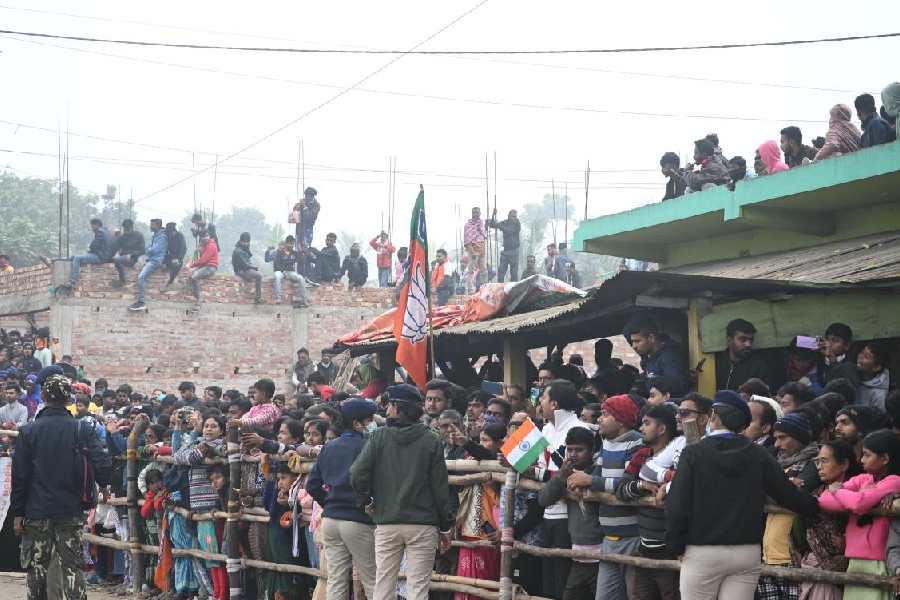
Engulfed by a strange feeling that afternoon, I went through the Plassey gate, now known as the East gate, of the majestic Fort William, accompanied by two patriarchs of the erstwhile royal family of Awadh - Sahebzada Wasif Mirza and Dr. Sultan Ali Sadiq.
This was the same gate through which our ancestor Nawab Wajid Ali Shah, the last ruler of Awadh, had entered Fort William in May 1856, only a week after his arrival in the city from Lucknow, subsequent to losing his kingdom to the British East India Company.
The royal entourage was invited by the governor general, Lord Canning, who had even ordered a 21-gun salute in honour of the deposed ruler from the ramparts of the fort. However, by a cruel twist of fate, the same governor general ordered his arrest a year later, on June 16, 1857, fearing that the exiled ruler might plan an uprising against the British after a rumour which started from the Hospital gate of Fort William.
The nawab was promptly taken into custody and led in through the George Gate and held under nazarbandh (house arrest) inside the fort.
.jpg)
Once a bastion of the British, today Fort William serves as the headquarters of the eastern command of the Indian Army but what is interesting is that entrenched in its formidable walls are the mysteries of a bygone era.
One of the mysteries until now was the exact location where Wajid Ali Shah had been kept as a prisoner. As a direct descendant of the nawab, I grew up hearing from my elders that the last ruler of Awadh was kept under nazarbandh in the fort for more than two years.
However, no one knew for sure where he was kept during those difficult times. We only knew that he spent those harrowing months in a large house that befitted his status. Various enquiries were made with senior army officers from time to time, but it yielded only calculated guesses. There was not a shred of evidence to pinpoint the exact building.
This naturally aroused my curiosity and the suspense continued for too long till one fine evening when I received a call from Lt Col Nitin Shrestha, who is posted at the eastern command headquarters of the army.
He is a great history aficionado and while researching about this fort, came across documents on the location of the building in which the deposed ruler had been kept. The building back then was the governor house and is now known as the Amherst House. This house seems very much like a typical 18th century two-storeyed colonial structure of Calcutta.
It is an impressive building and even served as the governor general's official residence before the construction of the grand mansion, Raj Bhavan or the Government House, as it was known under the British Raj.
The building was considered an important one, as famous personalities like Marquis Cornwallis, Lord William Bentinck, Earl Amherst, Marquess of Hastings and Earl of Minto had lived here.
It also used to host important visiting dignitaries like Bishop of Calcutta, Reginald Heber. Fortunately, this building, which is somewhat in the centre of Fort William, is under the possession of the army and so it is well-preserved.
We tried hard to visualise how the nawab must have felt when he was ushered in to be lodged in this house. Climbing the stairs to reach the first floor made us feel that possibly that the flight of stairs must have been added later.
With an explorer-like attitude, we all entered the first-floor rooms. The main hall, which was the nawab's living room, is about 40 feet by 25 feet and has a very high ceiling supported by huge beams. There are remnants of attachments from where punkhas (fan) must have been hung to be drawn back and forth.
The first floor has seven rooms with many huge doors and windows on every side. This was typical of colonial architecture to facilitate the natural ventilation. The presence of the Hooghly river nearby must have provided the rooms with a cool breeze.
While standing in the rooms we tried to envisage what the set-up must have been when the exiled ruler lived there. Time stood still at that moment and the outside world became irrelevant.

During his confinement in the fort, Wajid Ali Shah had 12 courtiers for company, including his erstwhile Prime Minister, Ali Naqi Khan, who died in the nearby Royal Barracks.
The ground floor of this building had many small rooms that housed various offices. Close to Amherst House is a block which must have been used by the serving courtiers. Luckily, that too is left intact. The entire layout takes you back in time.
Pictures of Fort William dating back to this period indicate that there were very few buildings. The nawab must have gone out for his morning and evening strolls in these open spaces. Today, it looks very different because of various new establishments that have come up in the last 100 years.
The British took extra precautions with regard to the nawab's well-being because at that time the native forces had besieged hundreds of British soldiers and civilians in Lucknow's Residency.
Being crafty administrators, they were aware that any news of ill-treatment to their beloved ruler would have aroused flames of anger and act as a catalyst in storming the Residency.
Hence, for the sake of their own safety, the Garrison doctor was summoned to regularly examine the new inmates. Wajid Ali Shah, because of obvious reasons, suffered from depression and various other ailments.
However, he did not allow his grief and ill-health to pin him down. Even under such adverse circumstances, he thought of a way to express his sorrow.
Sitting in this new abode, he wrote a long narrative poem in Persian - Huzn-i- Akhtar (Sorrows of Akhtar); Akhtar was his pen name. This poem is considered a masterpiece and beautifully reflects his mood.
While the nawab was languishing in the fort, a twin tragedy struck the royal family. He first received the tragic news that his mother - Janab-i-Aliyyah - had passed away in Paris.
Soon and before he could recover from this heart-breaking news, he was told that his brother, Prince Sikander Hashmat, had died in London.
While in captivity, the exiled ruler demanded home-cooked food, which a carrier would bring everyday from his royal kitchen in Metiaburj, which was his home in Calcutta after he was ousted from his kingdom and exiled by the British.
All of a sudden, he was released on the evening of July 9, 1859.
Today there is nothing in the historically important Amherst House to suggest that this building played host to one of history's unluckiest rulers. The first floor where he lived and mentally prepared himself for the harsh reality of living as a king without kingdom in an alien land is like any other interior of a building belonging to that era.
The present occupants of this building are innocently unaware of the fact that the house which they occupy had at one time played host to a hapless ruler who laid the foundation of one of our finest cultures.
A man who gave, among other things, the regal cuisine of biryani with potatoes, lived here unsung.
By the time we left Amherst House, light had started fading. The two patriarchs accompanying me wondered with moist eyes how the Nawab must have felt while living in this fort.
The writer is the great great grandson of Nawab Wajid Ali Shah. He is an officer with the finance ministry, posted in Calcutta










